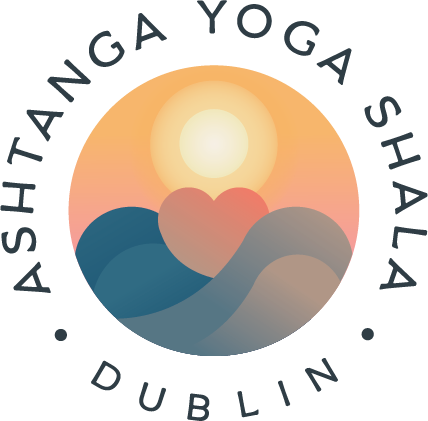Tristhana
When a friend or family-member says, "Hey, you're into yoga aren't you; what's the story with that?", I bet you say "Yeah, it's ASHTANGA yoga. It's not like NORMAL yoga classes". In other words, you don't want them to think that you go to this class where it's you and a load of grandmothers in leotards (especially if he or she is an attractive member of the opposite sex; or same sex if that's how you roll). But what is Ashtanga Yoga?The answer is: Tristhana.Tristhana is what constitutes the Ashtanga Yoga practice but it's possible you might never have heard the word.There are three elements to Tristhana (as you might guess from the 'tri' part of the word):AsanaWe all know this one. It's the postures. The most obvious/least subtle part of the practice. Asanas purify, strengthen and give flexibility to the body.BreathWe know about this too because we can hear all of our fellow practitioners "breathing with sound". The sound is very important for two reasons. First, the sound of our own breath draws our attention inwards and makes it easier to achieve pratyahara (the fifth of the eight limbs of Ashtanga Yoga) or withdrawal of the senses. Second, when we can hear straining or unevenness in our breath it acts as a warning sign that we may be pushing too hard and could potentially be about to injure ourselves. The inhale and the exhale should be of equal length and should be as steady as possible.Breath deeply and slowly, with attention to, and interest in, each breath and you will go deeper into yoga practice.Correct breathing purifies the nervous system.The kpjayi.org website saysFor cleaning the body internally two factors are necessary, air and fire. The place of fire in our bodies is four inches below the navel. This is the standing place of our life force. In order for fire to burn, air is necessary, hence the necessity of the breath. If you stoke a fire with a blower, evenness is required so that the flame is not smothered out, or blown out of control.The same method stands for the breath. Long even breaths will strengthen our internal fire, increasing heat in the body which in turn heats the blood for physical purification, and burns away impurities in the nervous system as well. Long even breathing increases the internal fire and strengthens the nervous system in a controlled manner and at an even pace. When this fire is strengthened, our digestion, health and life span all increase. Uneven inhalation and exhalation, or breathing too rapidly, will imbalance the beating of the heart, throwing off both the physical body and autonomic nervous system.An important component of the breathing system is mula and uddiyana bandha. These are the anal and lower abdominal locks which seal in energy, give lightness, strength and health to the body, and help to build a strong internal fire. Without bandhas, breathing will not be correct, and the asanas will give no benefit. When mula bandha is perfect, mind control is automatic.Note that bandhas are considered an extension of the breath, not as a separate technique in themselves. If you can try to mentally connect breath and bandhas you will find strength which you never knew you had.DristhiDristhi means 'looking place' and it is just as important as the asanas and the correct breathing method. To maintain consistent and correct dristhi through the entire practice is a huge challenge, and one which is really interesting to try. You may have heard people (including Suzanne and I) refering to the Ashtanga method as 'like a moving meditation'. The mediatation part is very unlikely to happen without observance of dristhi.There are nine dristhis: the tip of the nose, between the eyebrows, navel, tip of the thumb, tip of the middle finger, tip of the big toe, up, right side and left side.From kpjayi.org:Dristhi purifies and stabilizes the functioning of the mind.I have heard Sharath mention also that the practice of dristhi can greatly aid people suffering from depression.So these three elements are equally important in the practice. It is easy to neglect dristhi and breath in favour of focusing all of our energy on the asanas but without all three elements in place the practice will have much less benefit.So maybe, instead of saying that we are doing 'yoga practice' or even 'asana practice', we should say that we are doing 'tristhana practice'.
